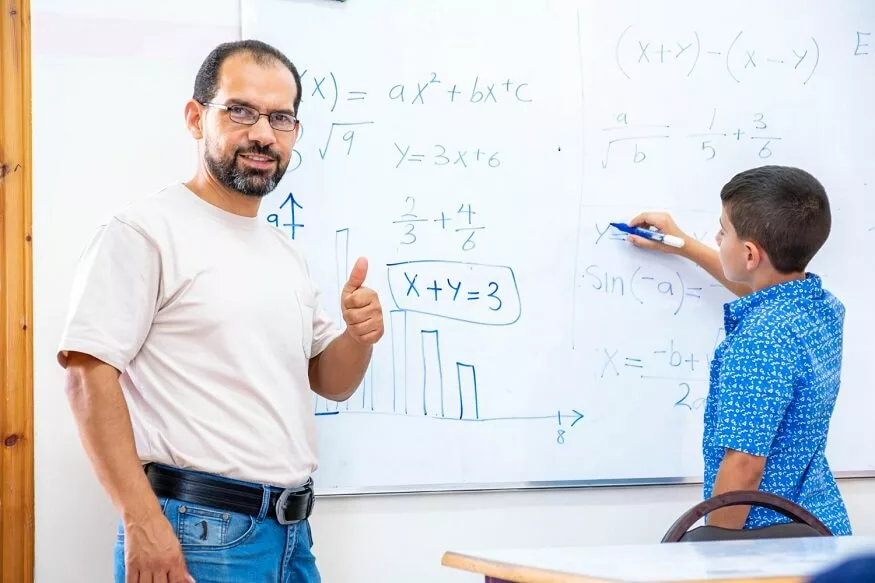Learning is an all-pervasive phenomenon involving all our senses, and experiences, via our cognitive, mental, physical and spiritual faculties. Our human brains are designed to learn from our every single experience, from the knowledge of others’ experiences, and our creative imagination of possible consequences.
This ability to learn and improve as we grow sets us apart from most other species. While learning is established to be an ongoing lifelong journey, formal education systems have been designed to standardise learning for young learners. The wise minds at the most popular education board in India, CBSE, decide “what” topics should be taught to young learners and “how”. While the “what” is equally important, it is the “how” which often determines the quality of learning delivered to young kids at school.
Children are evolving unhindered souls. Straight-jacketing them into old and traditional forms of learning may be akin to doing injustice to them and the topics being taught. Each topic being taught has its uniqueness and not every topic or subject is amenable to the same teaching methods. With the constant evolution in education technologies, the aids that teachers have access to open up unimaginable new horizons of learning and teaching.
Keeping these factors in mind and to address the evolving learning needs of young learners, CBSE schools frequently innovate in the teaching methodologies they use in class.
This blog talks about some of the more popular teaching methodologies being used in CBSE schools across India.
Also Read: The Role of Parents in Supporting CBSE Education
Mother-Teacher Model
For kindergarten kids, it is their first experience away from their mothers. In such cases, the teacher at schools needs to mimic the role their mother plays in their homes. This requires consistency of teachers that frequently interact, and take care of all their needs, including learning, feeding, and playtime.
Young learners develop a motherly attachment with their teachers and open up with them about their thoughts and emotions. This motherly bond of trust works best in opening up young learners to the long and tedious formal schooling system.
Teacher Centred Learning
This is probably the most commonly followed traditional form of teaching where the teacher sets the agenda and drives the learning outcome as per the same. While easy to execute, this method has a lot of flaws and that is why it is vehemently discouraged by experts. Each child is unique, especially when young, they are still in a phase where they are exploring the world and their environment.
Each child might have their own unique pace and ways of learning. It is unfair to standardise it for all via a teacher-centred learning methodology. Plus, young minds are “wanders”. Their inherent creativity lies in their ability to wonder and think unconventionally.
“Chapterising” their learning process with a sequence of pre-decided topics does nothing more than stifle their learning and even leads them to lose interest in learning entirely.
Teacher-centred teaching methodologies are usually laced through regular continuous assessments such as tests, quizzes, and exams which adds further pressure to the young minds who have just been exposed to the concept of ‘organised’ learning.
Also Read: Evaluating the Effectiveness of CBSE’s Assessment and Examination Reforms
Montessori Method
To address the above fallacies, the Montessori method of teaching gained in popularity which stipulates a more experiential student-centred teaching methodology. The focus is on learning by doing and hence experiential activities, toy-based learning, games-based learning, experiments, etc are an integral part of this learning methodology.
Young learners are typically engaged in group activities such as dancing, colouring & painting, rhymes with acting, sorting, pattern matching, building blocks, jumbled letters, shape sequencing, etc.
Through these stimulating activities, young learners learn to explore, discover, and experiment in a risk-free, non-judgemental, and joyous environment.
Flipped Classrooms
Flipped classrooms have gained popularity as a methodology in the last few years. As the name suggests, it works exactly the opposite of how a typical class works. For example, traditionally, a teacher teaches a topic in class and gives some exercise or activity for students to work on at home.
In a flipped classroom, the teacher provides all the teaching material for the students to go through at home and come to class prepared to engage in some activities based on the topic. So, inherently what was being done at home previously is now being done in class and vice-versa.
For example, a teacher might share a video lesson followed by a few articles to read on India’s struggle for independence and then ask the students to come prepared to debate in class on the dictum of non-violence propagated by Mahatma Gandhi or the ‘Kranti’ of Bhagat Singh and Subhash Bose.
Also Read: Comparison Between CBSE and State Board Education
Inquiry-Based Learning
Inquiry-based learning is an eminent form of active learning that is typically initiated by posing a question, problem, or situation.
The young learners are then left to explore, ask poignant questions, do the required research to find answers to their questions, think, discuss, and finally arrive at conclusions based on available information.
Gamification
Integration of game dynamics into learning is the latest addition to the revolution in learning methodologies. It is no hidden fact that children find learning tedious, while games are extremely fun and joyous. Why not merge the two?
The gamification method of teaching leverages game-play techniques to enhance the learning experience of children. For example, one of the factors that keeps kids engaged in gaming is the constant gratification they receive in the form of points, coins, badges, levelling up, etc. Then there is a big summit to achieve where they tend to compete with their peers.
This is what keeps them hooked on. Teachers have also leveraged these techniques and gamified their learning journeys. This can be easily observed on any of the popular tech platforms.
Also Read: CBSE’s Initiatives for Skill Development among Secondary Students
Leveraging Technology
Finally, we cannot ignore the increasing role played by technologies in the classroom. EdTech firms have revolutionised the way content is delivered in the classroom.
The days of static black/whiteboard or dry PowerPoint presentations are largely over. Today is all about iPads, interactive boards, smart screens, animations, and whatnot.
At EuroSchool we are leveraging best-in-class technological innovation to constantly upgrade the learning experience of our young learners. Our teaching methodologies are designed by expert educationists keeping in mind the specific types of topics and the unique needs of our students. Our engaging classrooms, labs and activity areas are always abuzz with excitement indicating a successful assimilation of learning while having fun.










